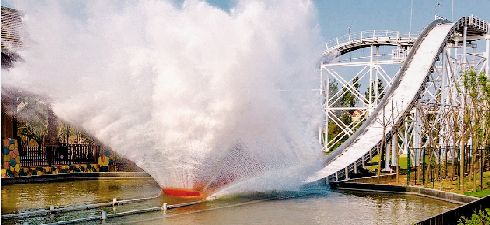- Albanian
- Arabic
- Belarusian
- Bengali
- Czech
- English
- French
- German
- Hebrew
- Hungarian
- Indonesian
- irish
- Italian
- Japanese
- kazakh
- Persian
- Russian
- Thai
- Uzbek
- Vietnamese
designing a roller coaster with functions
Designing a Roller Coaster with Functions
Roller coasters have captivated thrill-seekers and amusement park enthusiasts for generations. The thrill of speed, the anxiety of drops, and the excitement of complex twists and turns have made these attractions an essential part of the theme park experience. However, designing a roller coaster goes beyond just creating a thrilling ride; it requires an intricate blend of engineering, physics, and creativity. Understanding how to design a roller coaster with specific functions is essential for ensuring safety, enhancing the user experience, and optimizing performance.
Understanding Roller Coaster Functions
At its core, a roller coaster can be understood as a series of mathematical and physical functions. The primary functions include height, speed, acceleration, and airtime, all of which contribute to the overall experience the ride offers. When designing a roller coaster, engineers must consider how these functions interact with each other. For example, a taller coaster may provide more potential energy at the start, leading to greater speed as the train descends. Conversely, a coaster that incorporates loops and corkscrews must manage g-forces to ensure a safe and enjoyable ride.
Safety First
Safety is paramount in roller coaster design. Engineers must adhere to stringent safety standards and conduct rigorous testing before a roller coaster can be opened to the public. Key functions related to safety include restraint systems, track integrity, and emergency protocols. Restraint systems must function effectively to keep riders secure without causing discomfort. Similarly, track design needs to account for wear and tear, as well as the physics of high-speed travel.
Furthermore, engineers often incorporate braking systems that not only slow down the train but also provide a smooth stop at the end of the ride. These braking systems must function reliably regardless of the coaster's speed at the moment of braking. The goal is to ensure that every aspect of the ride is designed with redundancy and fail-safe mechanisms to protect riders.
Creating the Experience
designing a roller coaster with functions

Once safety functions are established, the focus shifts to crafting an exhilarating user experience. This involves understanding how different elements, such as drops, loops, and turns, impact riders' emotions. Engineers often use computer simulations to model how these elements interact with speed and g-forces, ensuring that the ride delivers just the right amount of thrill without overwhelming participants.
A key aspect of the roller coaster experience is airtime—the sensation of weightlessness that occurs when the train crests a hill or dives quickly. Designing for airtime requires careful planning. Engineers must strike a balance between the coaster’s vertical drops and their height to control the intensity of airtime moments. This design can create a sense of freedom that enhances the overall enjoyment of the ride.
Innovative Technology and Design
Modern roller coasters utilize advanced technology to enhance their functionality and performance. The use of computer-aided design allows engineers to create complex tracks that would have been unimaginable in the past. Innovations such as magnetic launch systems replace traditional lift hills, providing a smoother and faster takeoff. Additionally, advancements in materials have led to the use of lighter yet stronger components, which allow for more daring designs and reduced maintenance costs.
Moreover, the integration of virtual reality (VR) into roller coasters has opened new avenues for user experience. VR headsets can immerse riders in a digital narrative that complements the physical ride, adding a layer of excitement and engagement. This fusion of technology expands the possibilities of what a roller coaster can be and how it functions, leading to innovative designs that push the boundaries of traditional amusement park rides.
Conclusion
Designing a roller coaster involves a delicate balance between safety, engineering principles, and entertainment value. By carefully considering the functions of height, speed, and user experience, engineers can create thrilling rides that delight and engage riders while ensuring their safety. As technology continues to evolve, the future of roller coaster design promises even more exciting experiences, blending the art of storytelling with the science of physics for a ride that is not only fun but also a testament to human ingenuity.
-
Flume Ride-Hebei Zhipao Amusement Equipment Manufacturing Co., Ltd.|Thrilling Water Attraction&NIST Safety StandardsAug.01,2025
-
Double Ferris Wheel Sale | Premium Custom RidesJul.31,2025
-
Flume Ride-Hebei Zhipao|Water-Based Attraction, Safety Standards, High-Speed DescentJul.31,2025
-
Flume Ride: Thrilling Water-Based Adventure & Advanced Engineering - Hebei ZhipaoJul.31,2025
-
Flume Ride-Hebei Zhipao Amusement Equipment Manufacturing Co., Ltd.|Thrilling Water Attraction&Customizable DesignJul.30,2025
-
Flume Ride - Hebei Zhipao Amusement Equipment | Water Coaster, Thrilling DescentJul.30,2025
